This post contains affiliate links.
If your time in Costa Rica is limited, and you want to check off several experiences in one visit, La Paz Waterfall Gardens is the perfect half day trip from San Jose. It’s also a great introduction to Costa Rica’s wildlife and natural habitat if you plan to explore further on your own.
La Paz Waterfall Gardens, located on the eastern slopes of Volcan Paos, is Costa Rica’s best wildlife sanctuary of rescued animal wildlife. As a privately owned ecological attraction, it’s a bit more like a lush park than a zoo. But do understand that you’ll see some animals caged, albeit in a natural environment, their residency the result of rescue not capture.
Why go?
If you’re dreaming of seeing jungle cats, jaguars or monkeys from a position of safety while in Costa Rica, or want to photograph stunning birds like toucans, parakeets or scarlet macaws, this is where to come. Known for its stunning waterfalls and lush, well-kept gardens, La Paz Waterfall Gardens is a peaceful reserve inviting visitors to wander 3.5km of lushly forested scenic trails surrounded by colorful flora and fauna. The property boasts five stunning waterfalls with multiple viewing areas. Expect exotic birds, cats, monkeys and sloths, plus butterflies, hummingbirds, snakes, frogs and bugs – over 100 species in total. If you’re logging wildlife and waterfall sightings while in Costa Rica, La Paz Waterfall Gardens delivers bang for your buck and time.
But first comes the drive to get there.
Getting to La Paz Waterfall Gardens
La Paz Waterfall Gardens is just 50km from San Jose, but the drive takes 1hr 30 minutes due to the curves and narrowness of the road often blanketed in fog. Whether you’re in a rental car or a tour bus, pack the Gravol if you’re prone to motion sickness. Expect intermittent showers as you navigate the rain forest jungle roads, and watch for the potholes. It wouldn’t be Costa Rica without the risk of losing a tire to an unexpected crater on the road in transit. Think of these as features, not a bugs!
If you’re looking for a reputable rental car company, I’ve used Vamos while in Costa Rica and can personally recommend them. Check out this post on how to avoid a costly Costa Rica car rental experience for a full run down on what you need to know before renting, and while driving.
If a car rental isn’t in the cards for more extensive touring, you may wish to consider the group bus tour option to get to La Paz Waterfall Gardens.
A tour bus confession
Tour bus groups are not normally my thing. But I found myself sitting on a bus to La Paz Waterfall Gardens with a group of business colleagues in early December last year. We had all stolen away for a half day tour during the Canadian Association of Professional Speakers annual conference. With the conference being held somewhere exotic and warm for the first time ever, our group of Canadians was as giddy with excitement at having escaped the winter weather, as exploring waterfalls and Costa Rica wildlife. With many aboard being long-time friends united through profession, it was a much reunion as a tour.

“On the bus, the volume is high. It’s evident from the endless chatter, punctuated by a self-appointed tour director spouting off trivia in a bid to keep us entertained, that this group speaks for a living. We’re like a bunch of kids being horded off to camp. The unknown awaits. The nervous chatter unites.“
La Paz Waterfall Gardens is a nature reserve
I initially had reservations about visiting a location that sounded like a zoo. But once I understood that this reserve housed rescued animals, I was less concerned. When you enter La Paz Waterfall Gardens, this signage greets you:
“None of the animals that you will see in this Wildlife Refuge have been taken from their natural habitat; they were entrusted to our care by the Costa Rican Wildlife Ministry, most of them were illegally held as pets when the Wild Life Ministry found and confiscated them. For various reasons these animals cannot be released back in to the wild.”

“Upon arrival, we check in at the front desk. The appearance of two tour buses has sent solo visitors who arrived by car into overdrive, hastily processing entry at the gate to beat the crowd. We weave our way through exhibits. Speakers chase butterflies for photos like celebrities with the lens turned.“
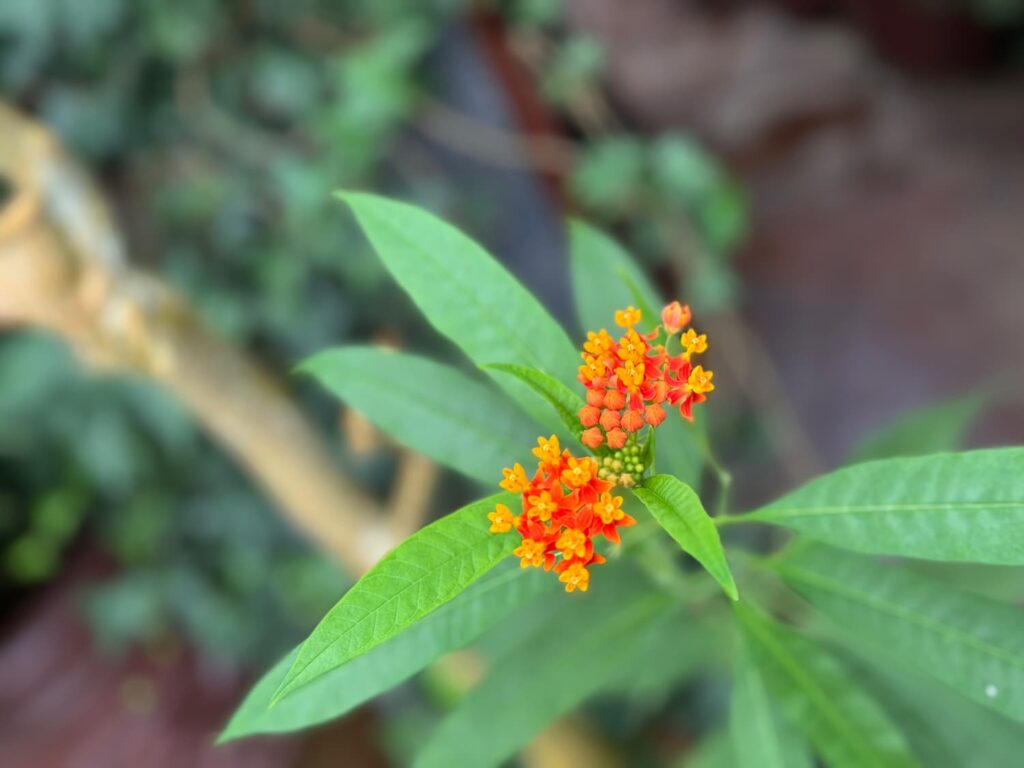
“Some mimic toucans and parakeets, clearly seeing the showy strut as the sign of an equal on the other side of the cage. And some speakers engage in conversation with monkeys, because heck, they had a presentation to rehearse, and the furry haired bipeds seemed a receptive audience. I realize it’s all amusingly normal with this crew of colleagues, and I’m immediately grateful that I hopped on the bus!“

Butterflies
The butterfly observatory is an enclosed structure that allows over 20 different species of butterfly to soar freely while guests walk around the natural habitat. I loved watching and following the flight of the Blue Morpho Butterfly, the most recognized butterfly in all of Costa Rica.

The bright vibrant color is hypnotic, the iridescent blue an optical illusion caused by microscopic scales on the wings. Being in the presence of butterflies lifts the soul. I love watching them dance from location to location. I had already encountered numerous Blue Morpho butterflies while hiking Ricon de la Vieja National Park in Guanacaste the previous week. But at the time I hadn’t understood their significance.
The butterfly area has a lab which allows you to follow the life cycle and metamorphosis from egg to caterpillar, to butterfly. But you can also see caterpillars on various open air bushes and trees, if you care to search.

The lifecycle exhibit will take you back to grade school science days in the best way possible.
Exotic birds
The exotic birds area of La Paz Waterfall Gardens is a birdwatchers paradise. You can see some of Costa Rica’s most exotic colorful birds up close – without binoculars. The Aviary is a refuge for wild birds that have either been captured illegally by hunters and confiscated by the government, or donated by their owners. That’s something to keep in mind if you’re wondering why these birds aren’t back in their native habitat. Many lack the basic skills to survive in the wild on their own.


You’ll see the iconic Costa Rica toucan, which graces many tourist brochures as an unofficial country mascot. You’ll also see motmots, macaw and parrots. Talkative, sometimes squawking, these birds gave our group some competition. They must has sensed we were all professional speakers!
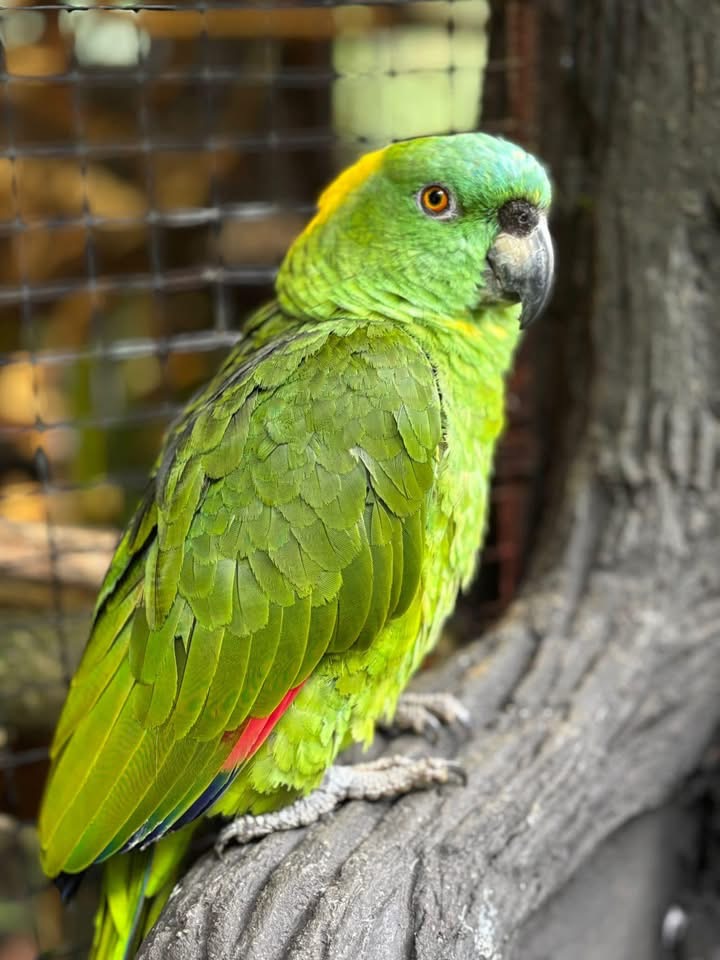
Monkeys
Spider Monkeys and White Faced Monkeys play and amuse observers in the monkey exhibit area. Monkeys flex their skills flying through the trees of the Monkey Pass canopy above guests.

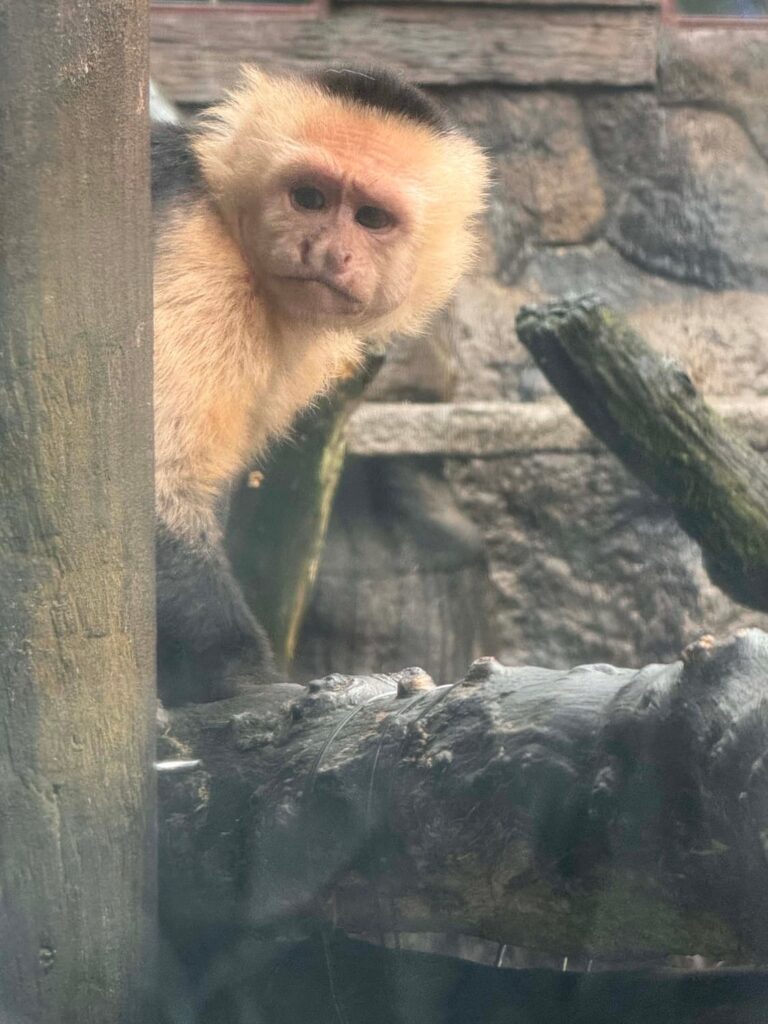
It’s the next best thing to seeing them perform in the wild, which I witnessed while hiking in Rincon de la Vieja National Park. Monkeys are highly social, living in groups, and known for their intelligence and agility. The monkey exhibit area is inquisitive cuteness personified.
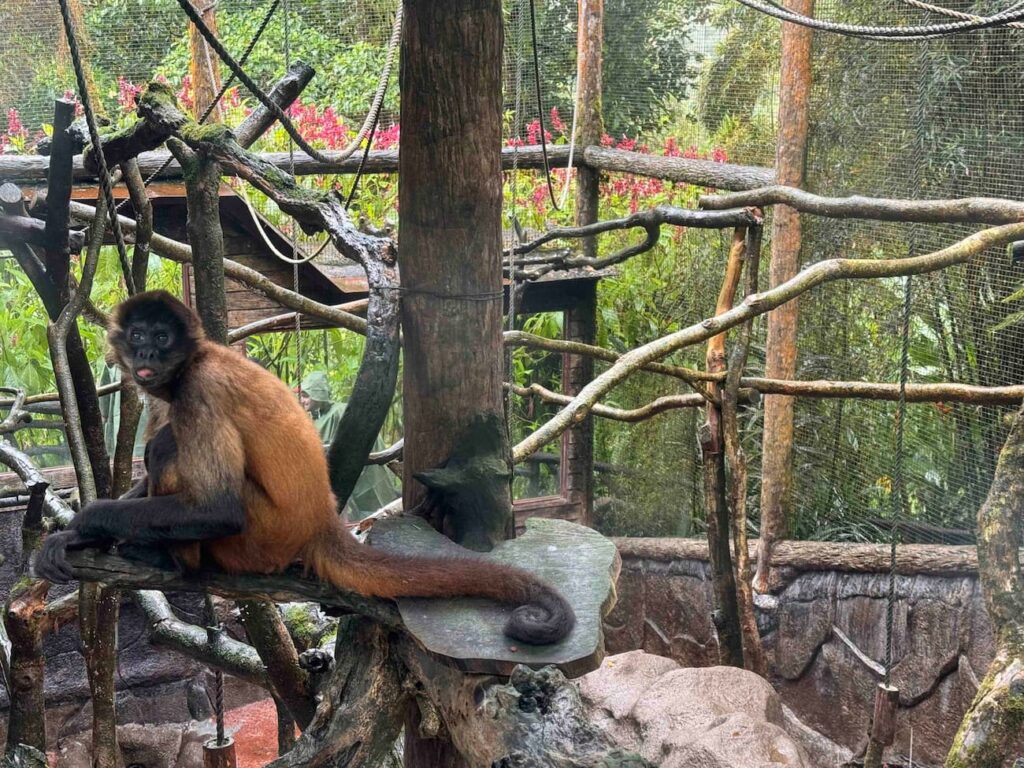
Hummingbirds
The hummingbird garden allows visitors to observe up close 26 species of hummingbirds interacting in the wild, feeding and buzzing about. I found it fascinating to learn that Costa Rica is a migratory area for hummingbirds wintering from Canada. They’re the original snowbirds I guess!

Curious fact: to prepare for the flight south in the fall, hummingbirds increase their body weight by 25-40%. Some like the ruby-throated hummingbird, make the 18-24 hour flight non-stop. They seem like such frail creatures, but are incredibly powerful. You’ll love being able to see and interact with them up close in the open garden space.
Frogs
The Ranarium is an area where frogs climb freely in a natural setting, allowing visitors to view Poison Dart Frogs and Leaf Frogs up close. Thankfully these frogs were behind glass, since we learned that touching a poison dart frog can cause a range of reactions, from mild irritation to severe poisoning, paralysis or death. Unlike my experience with frogs in youth, picking them up, and friends racing their frogs against each other, these critters demand respect. (I grew up in a neighborhood of boys. Frog racing was big, right behind riding tricked out bikes with monkey bars and banana seats over jumps)
In Costa Rica the brighter the color, the more poisonous the frog apparently. And I thought the snakes would be the most dangerous critters!

Snakes
Another confession: I’m not really into snakes. In fact, they scare me if I’m being honest. But I’ll admit they are beautiful – when observed from a distance. The Serpentarium exhibits 30 of the deadliest snakes of Costa Rica. Housed safely behind glass, it’s a great way to be put face to face with the Bushmaster, Terciopelo, Green Vinesnake and Golden Eyelash Viper.

Not that any of these were on my wish list for a rondesvous in the Costa Rica wild, but it was cool to learn more about them. The Terciopelo accounts for the most dangerous snake bikes in Costa Rica. I wish I had photographed the curious Golden Eyelash Viper, known for its yellow color and distinctive “eyelash” like scales above its eyes.
Apparently while batting those eyes in preparation for an advance, the Viper has the ability to move quickly and ambush prey – small birds and frogs. Do Golden Eyelash Vipers die if they eat a Poison Dart Frog I wondered? Apparently yes, since the frogs powerful toxins are lethal to animals that ingest them.
Sloths
One of my favorite exhibits was the sloths. In a world of seemingly always connected with a drive to succeed, the super chill, slow-moving attitude of the sloth is infectious.

Just watching them conserve energy was enough to slow my metabolism. And spending most of their time hanging upside down in trees? Perhaps they’ve figured out how to view the world these days!
Jungle Cats
The jungle cat sanctuary is where you’ll find several different types of wild feline found in Central America. Admittedly I’m more of a dog than cat person, but there’s something about the power, grace, and flexibility of wild jungle cats that is intoxicating to watch. Maybe it’s the combination of fear and respect, but these beasts are beautiful to observe up close.
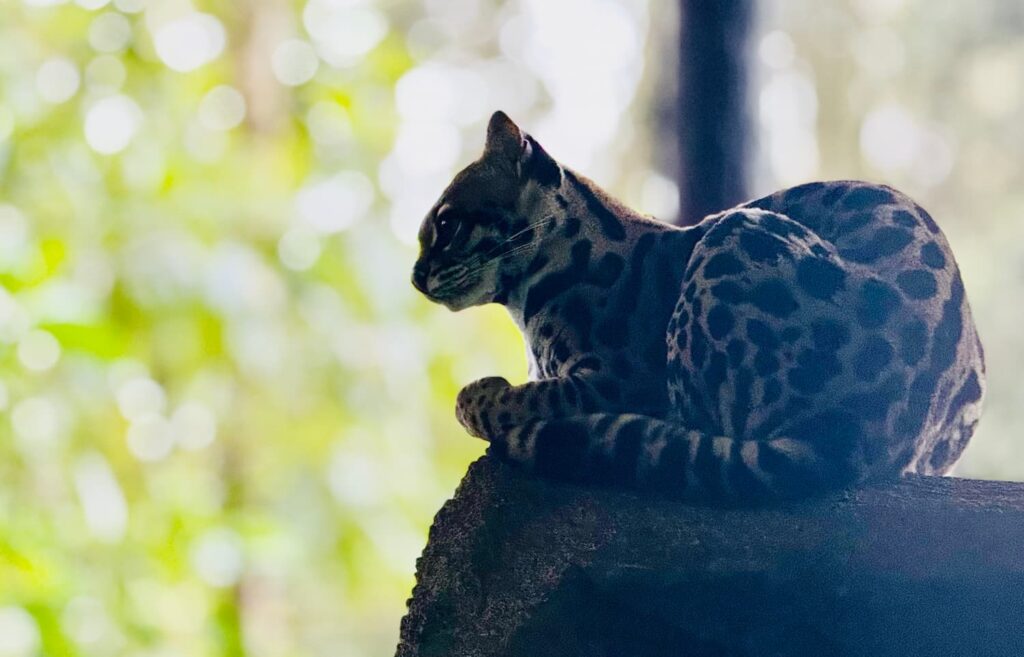
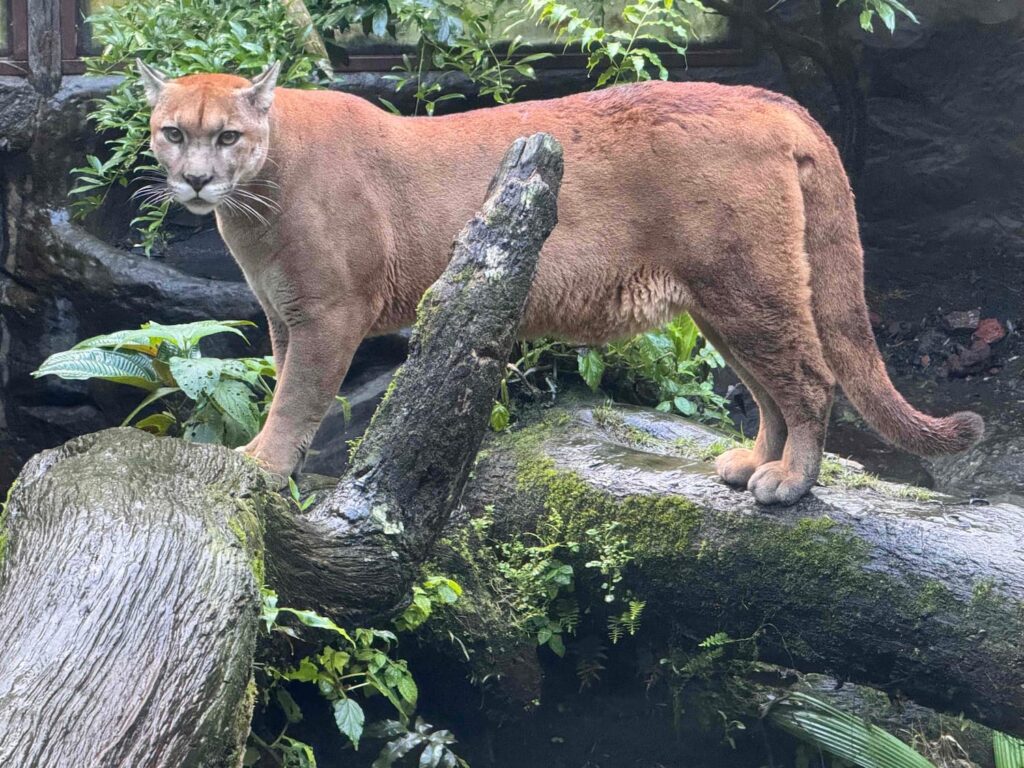
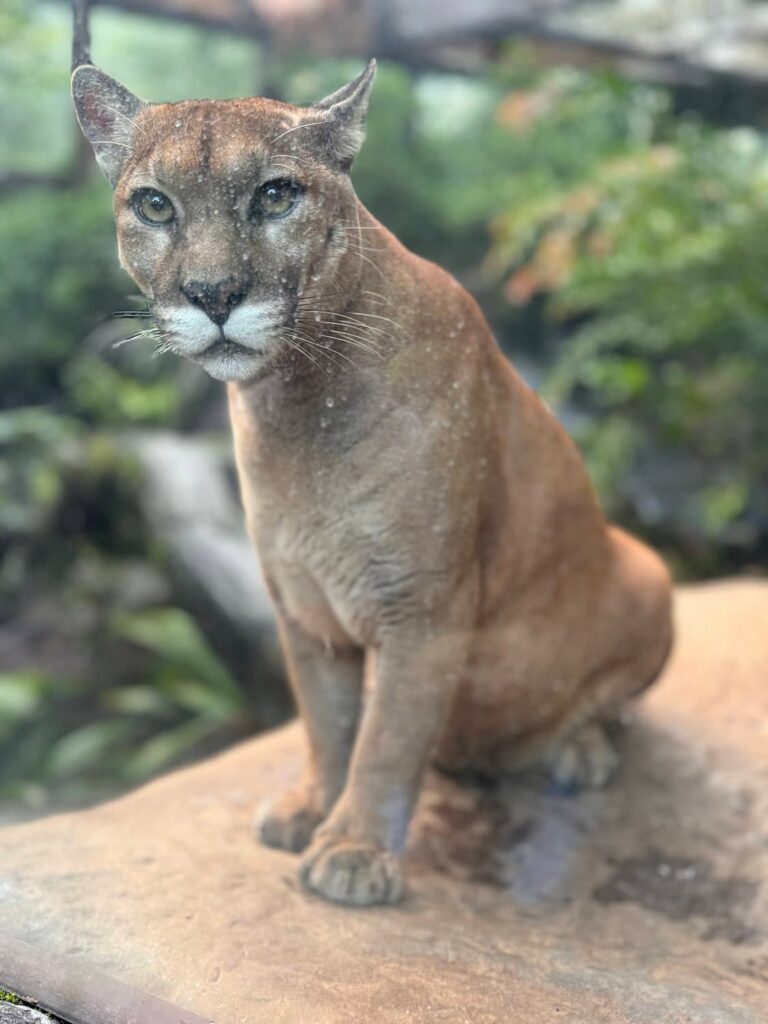
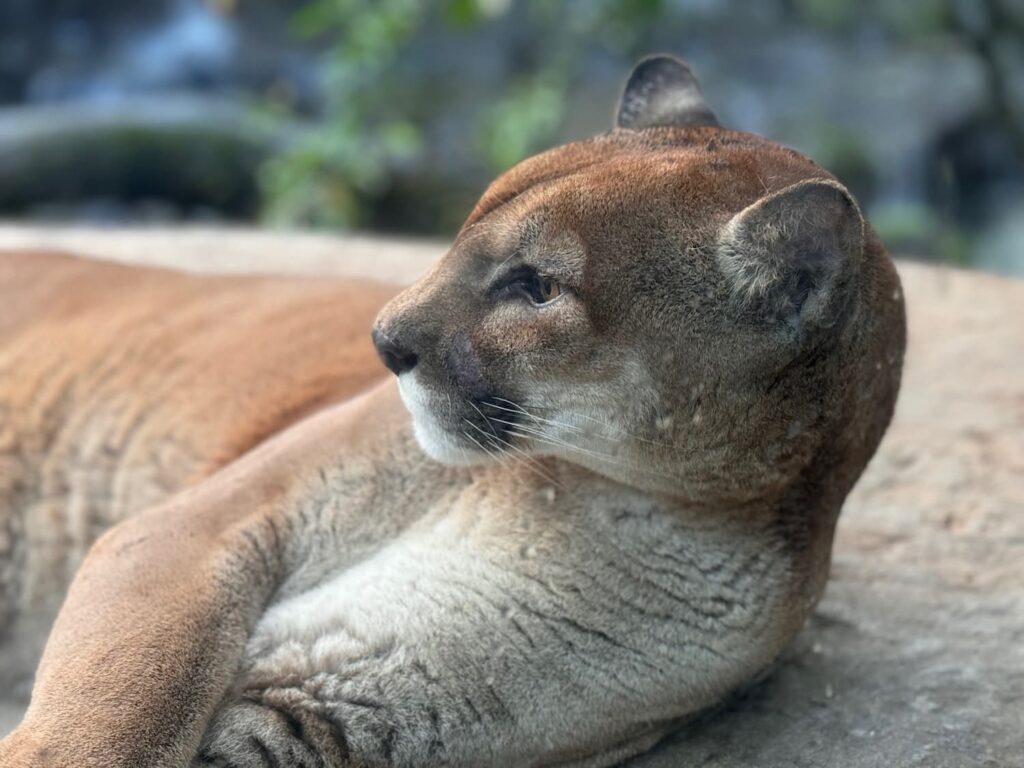
From pumas to jaguars, the best time to view the cats is around 3:30pm when they are most active. We stayed to watch the raw, fearless, bone crushing feast as they dined on chicken carcasses fed by handlers. That alone, if you’ve never witnessed it (and frankly, how could you?) is worth the price of admission.
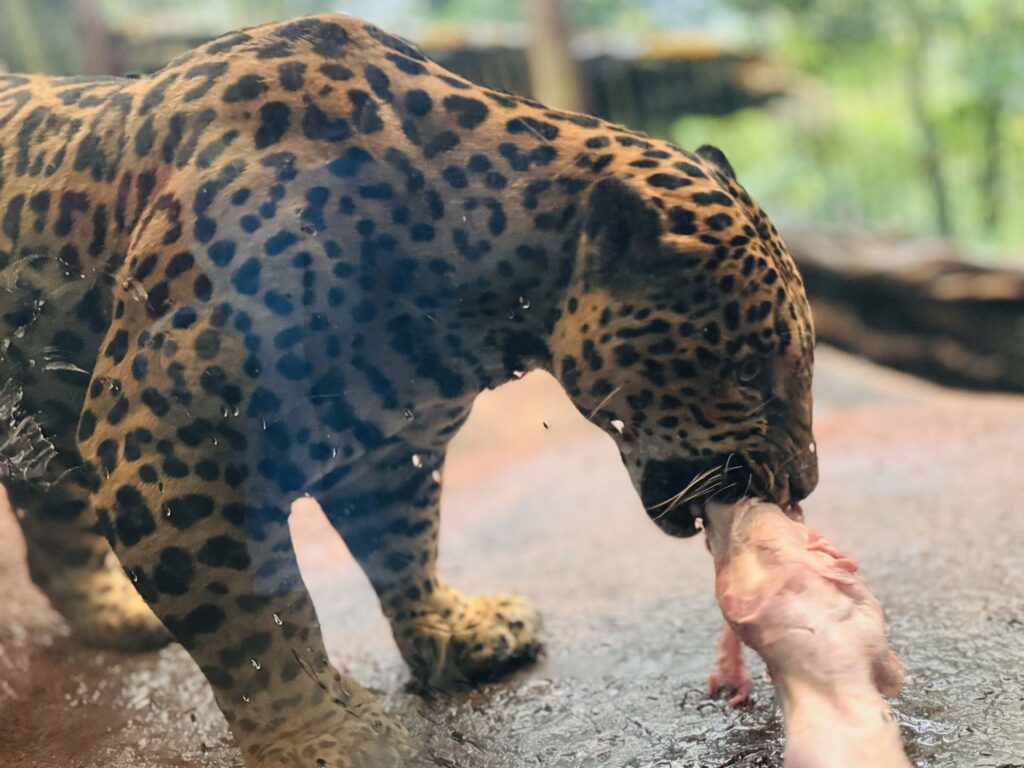
Ponds, bugs, spiders and more
If the snakes, poisonous frogs, and jungle cats feeding haven’t put you over the edge, be sure to check out the spider display. Fortunately the zen like waterfall ponds while help calm to return.
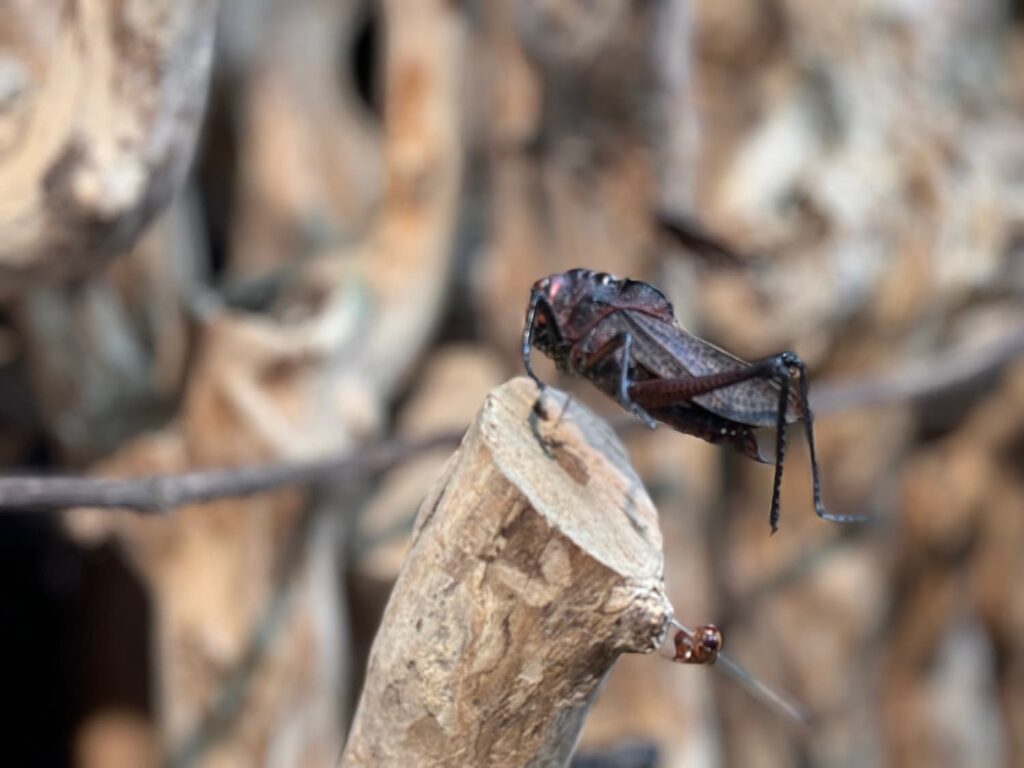
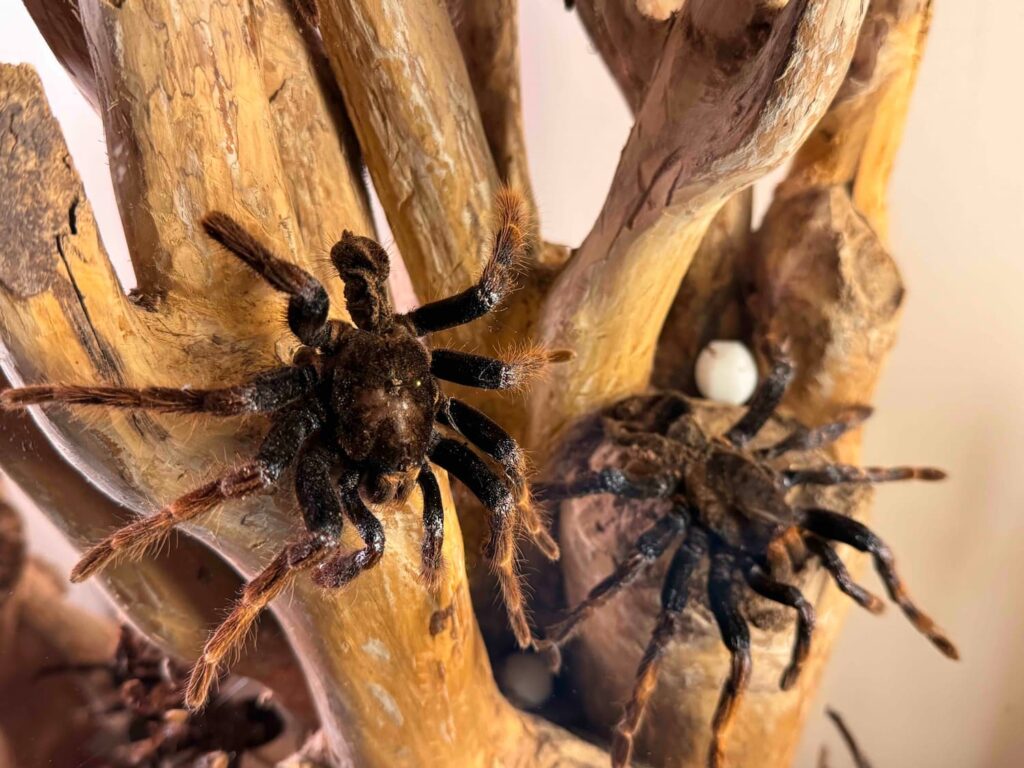
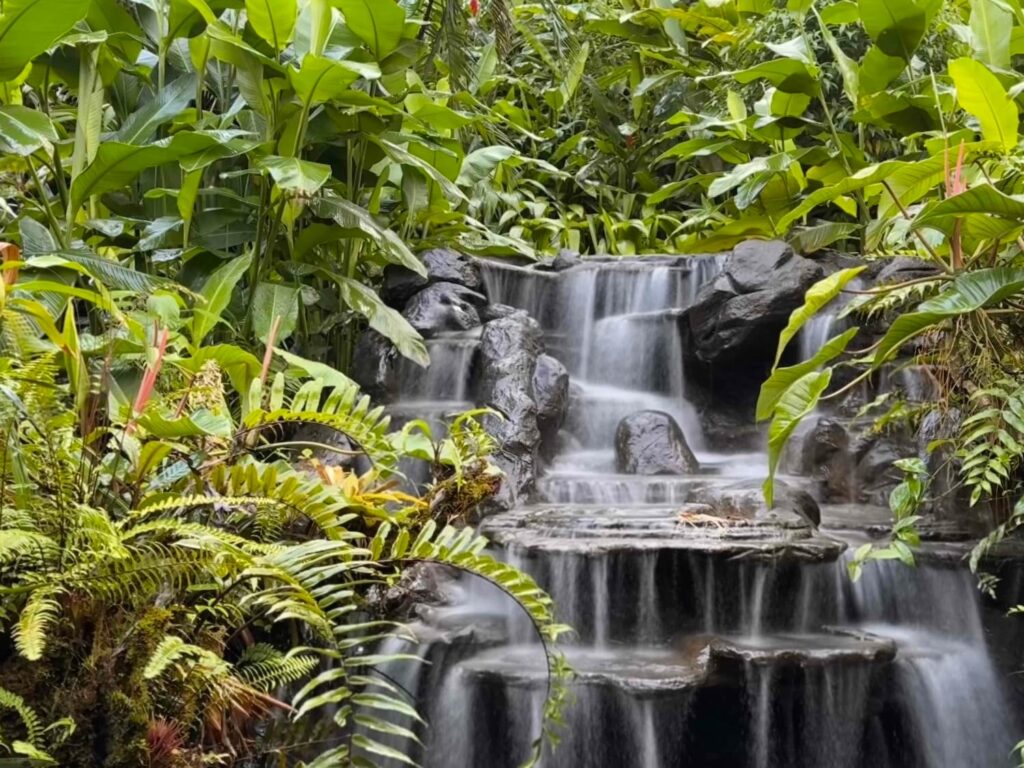
“Content that we’d satisfied all wildlife learning opportunities, and checking that nobody was still rehearing their keynote on the monkeys, our group headed out through the lush trails leading to the five waterfalls at La Paz Waterfall Gardens.“
Waterfalls
There are five waterfalls within La Paz Waterfall Gardens: Templo, Magia Blanca, Encantada, Escondida, and La Paz.
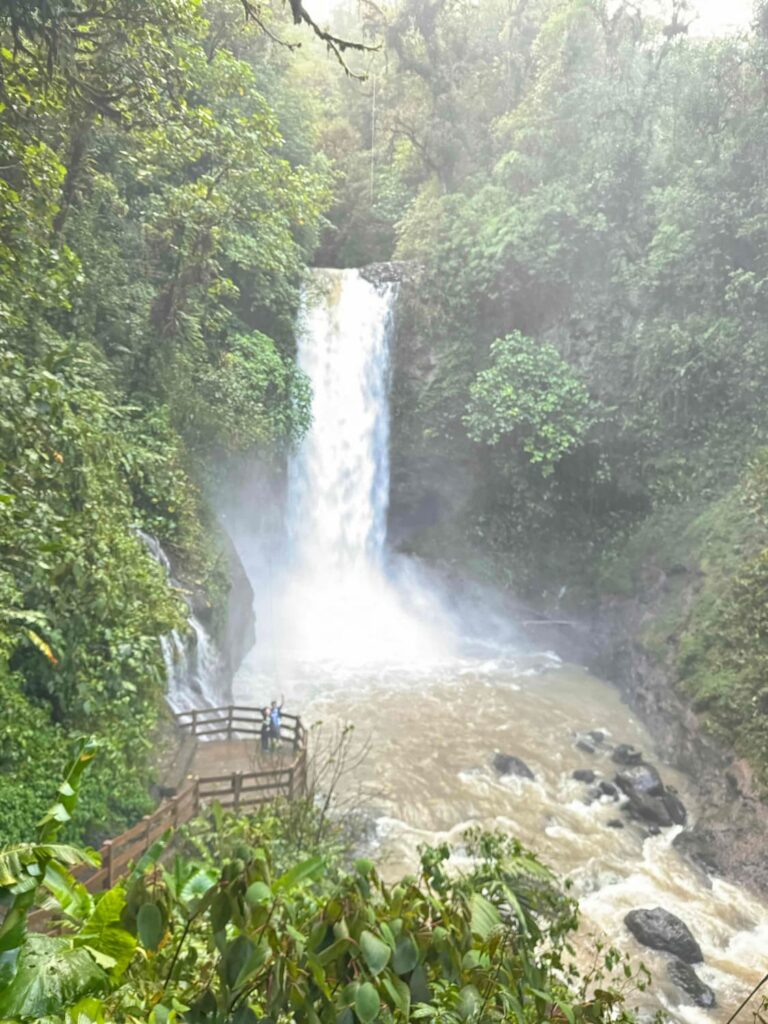
If you follow the walking trail route map (orange on the map below), you will pass by all five waterfalls, finishing up at La Paz.


The Templo Waterfall has upper-level and lower level lookouts. The Magia Blanca Waterfall offers a photo opportunity behind the cascading water. Encantada and Escondida Waterfalls are side by side. The parks namesake, La Paz Waterfall can only be viewed from above.
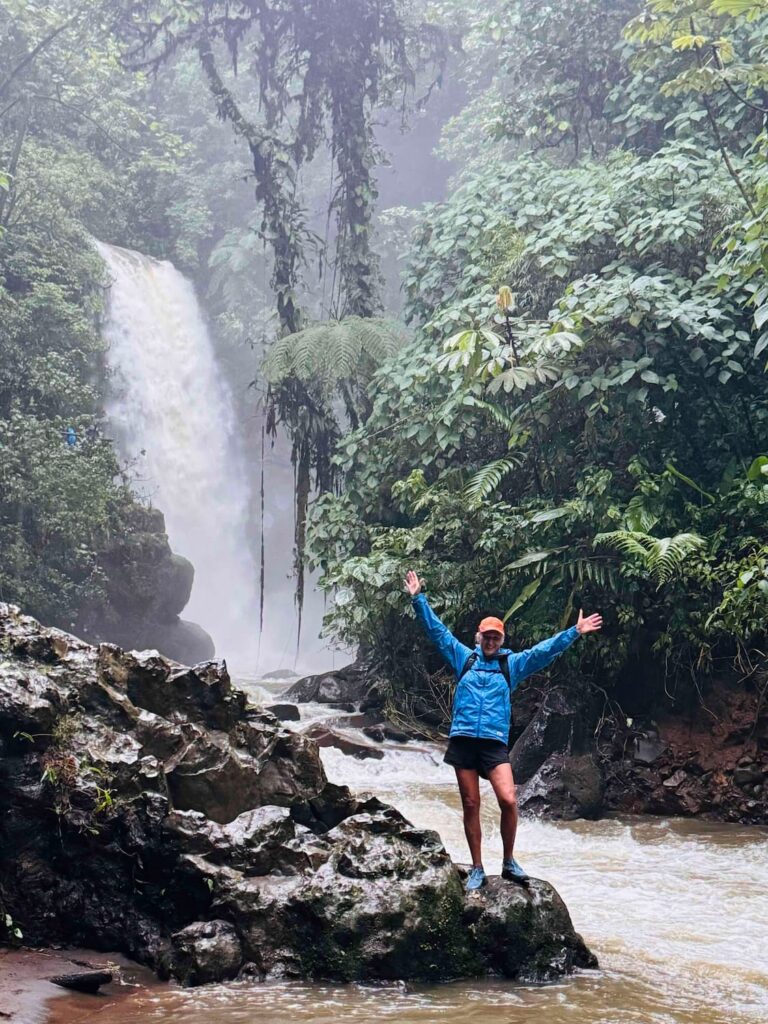
There are also some view corridors along the walking trail through the lush gardens. The trail is walkable but be prepared for uneven terrain, hills and steep staircase descents as you climb into and out of waterfall viewpoints.
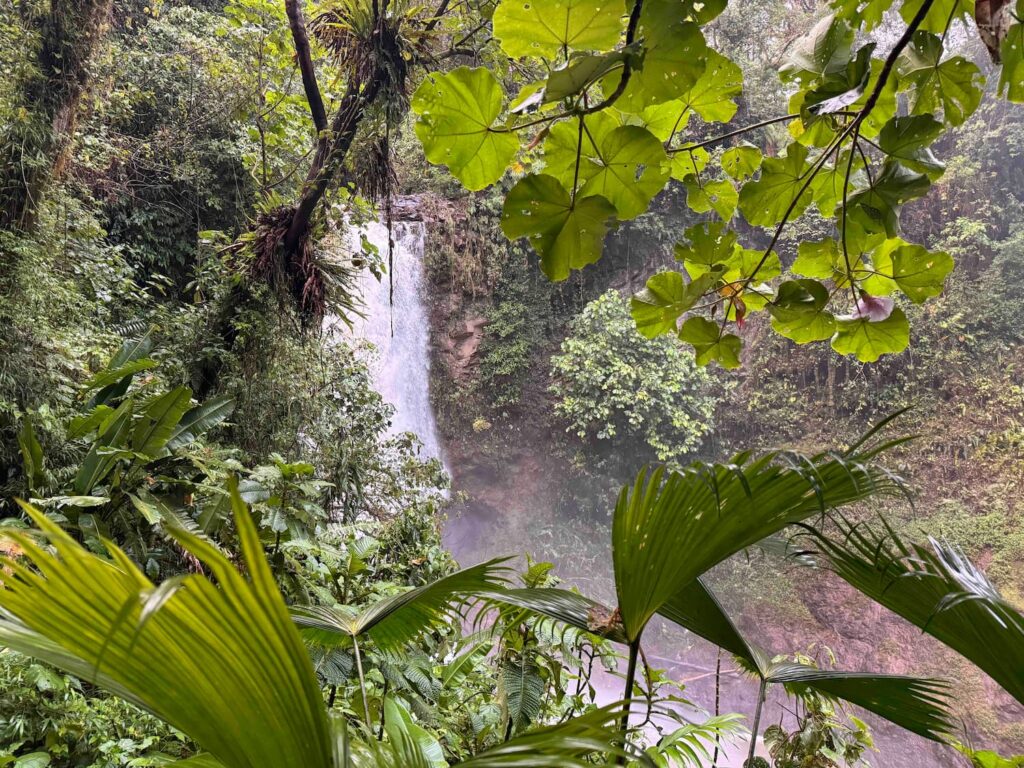
“Like a group of happy campers, my speaking industry colleagues chat and laugh as we walk the waterfall route with the efficiency of a well-planned book tour, posing for photos and grabbing selfies. The intermittent showers of the day mixed with the misty spray from the falls doesn’t dampen spirits. Somehow everything just glows more in the moisture. There’s a reason Costa Rica is so green. We were glowing with joy too.“

What to bring
Since the experience at La Paz Waterfall Gardens is primarily a walking tour, be sure to wear comfortable shoes. You are prohibited from swimming in the waterfalls, so there is no need to bring a bathing suit. However, you would be well advised to pack along a rain jacket with hood or hat. Umbrellas are a challenge to navigate parts of the low hanging lush forest by the waterfalls trail, and they’re a nuisance in crowds and viewing areas. Insect repellant is also a good idea.

If you happen to forget a raincoat, the gift shop sells hooded ponchos that will do the trick, as a few of my friends figured out!
How much time to allow
You’ll want to allow a minimum of 2-3 hours at La Paz Waterfall Gardens, and longer if you plan to extend your walk along the Rio La Paz Tail or Fern Trail out to Trout Lake. You’ll also likely want to add time to stop at the covered outdoor Colibries Restaurant for a buffet lunch of Costa Rican fare. Nestled in the rainforest with the sounds of cascading waterfalls, the restaurant has been rated Four Forks by the Costa Rica Tourism Institute.
La Paz Waterfall Gardens makes a great half day trip, but you could easily turn it into a full day outing if you choose.
Guided tours
Guided tours are available on site at La Paz Waterfall Gardens. Tickets can be purchased at the venue or online in advance. Tours offer a behind the scenes look at the garden and wildlife. Guided tours are offered daily at 8:45am and 1:30pm, and reservations are required. We found the interpretive signs (posted in Spanish and English) and educational information quite useful though, so it’s certainly possible to tour the site on your own. But a guided tour would no doubt dive deeper if you want to know more about each species, the waterfalls, and Costa Rica in general.
Where to stay
There are accommodations in the area, but if you want something upscale and very Costa Rica cool, you must stay at the Peace Lodge, right within the park.
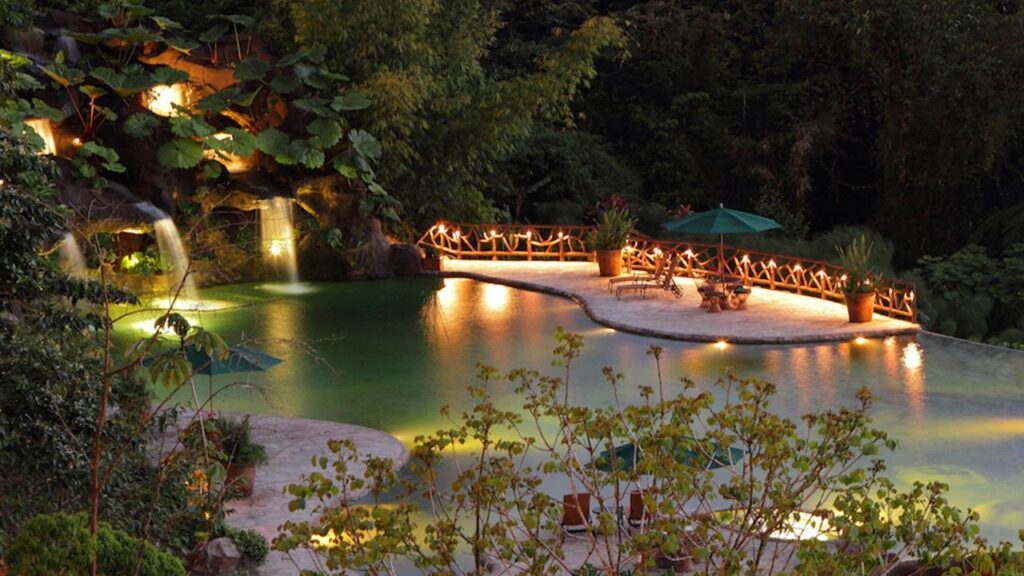
As a guest at Peace Lodge you are welcome to enjoy the grounds of La Paz Waterfall Gardens before the park opens, and after it closes. Located within the private wildlife refuge, Peace Lodge offers beautiful accommodations in a rainforest setting. They also offer an airport shuttle from San Jose. Think unique luxury, meets Costa Rica authenticity. Check availability.

If staying right in the park is not your style, there are numerous other accommodation options within the area. Check out options on this map.
Getting to La Paz Waterfall Gardens
La Paz Waterfall Gardens is 50km (about 1.5 hour drive) from San Jose city, and about a one hour drive from the airport. From Arenal, the drive is about 2 hours. La Paz Waterfall Gardens is on the way to the Monteverde Cloud Forest, and is 84km (52 miles) from La Fortuna, so a visit could also be added to your trip there, or combined with seeing the Paos Volcano.
FAQs
You have questions, we have answers!
Is La Paz Waterfall Gardens touristy?
Touristy implies busy, and highly curated. The experience at La Paz Waterfall Gardens is certainly curated, but in the most natural way possible. As far as crowds go, it really depends on when you visit and the time of year you go. If you’re not already part of a tour bus, it would be great to arrive on your own at a time when others tours are not present. With that in mind, you might want to check tour bus schedules for this attraction, and skip when they are most apt to be present. (I’ve done exactly that for attractions that get a lot of cruise ship traffic, and it’s been a very effective tactic)
In general, December and March tend to be busy tourist months in Costa Rica, so La Paz Waterfall Gardens will definitely have more guests during those months. Bottom line: This is a popular attraction, but it is efficiently managed, and even when highly trafficked, staff manage the flow of guests efficiently. Set your expectations accordingly, and then just enjoy yourself.
Is La Paz Waterfall Gardens worth it?
There is certainly value in your entrance fee to be able to experience so much Costa Rica wildlife and five waterfalls, all in one venue. We found the experience very educational. It was also incredibly worthwhile to have an opportunity to get up close to so many of these creatures. If your time in Costa Rica is limited, or you aren’t otherwise able to hike to waterfalls or get out in the rainforest jungle while there, I’d highly recommend visiting La Paz Waterfall Gardens.
Despite it being a wildlife sanctuary, if you feel compromised by an experience that has some commonalities with visiting a zoo, that is something you’ll have to come to terms with. Or, you may just wish to give it a miss and see if you can luck out in the wild on your own.
Other Costa Rica Tours
Check out these other Costa Rica tours: Volcanoes, waterfalls, zip lining, coffee plantations, white water rafting – it’s all here.
La Paz Waterfall Gardens Tours
Tour options for La Paz Waterfall Gardens that include transportation to the site.
La Paz Waterfall Gardens day pass ticket
Buy your park pass ticket in advance here.
More Costa Rica Content
There’s lots more Costa Rica content to explore on this site.
Things to Do in Costa Rica: Guanacaste Region This post contains a complete run down of beaches to visit, tips for access, secret finds in the region, waterfalls and hiking at Ricon de la Vieja National Park
How to Avoid a Costly Car Rental in Costa Rica Based on personal experience, this post will save you money and worry when navigating car rentals for your time in Costa Rica.
Driving in Costa Rica: What to know before you go Driving in Costa Rica is not for the faint of heart, but you can certainly do it safely if you know what to expect. This article has you covered.


